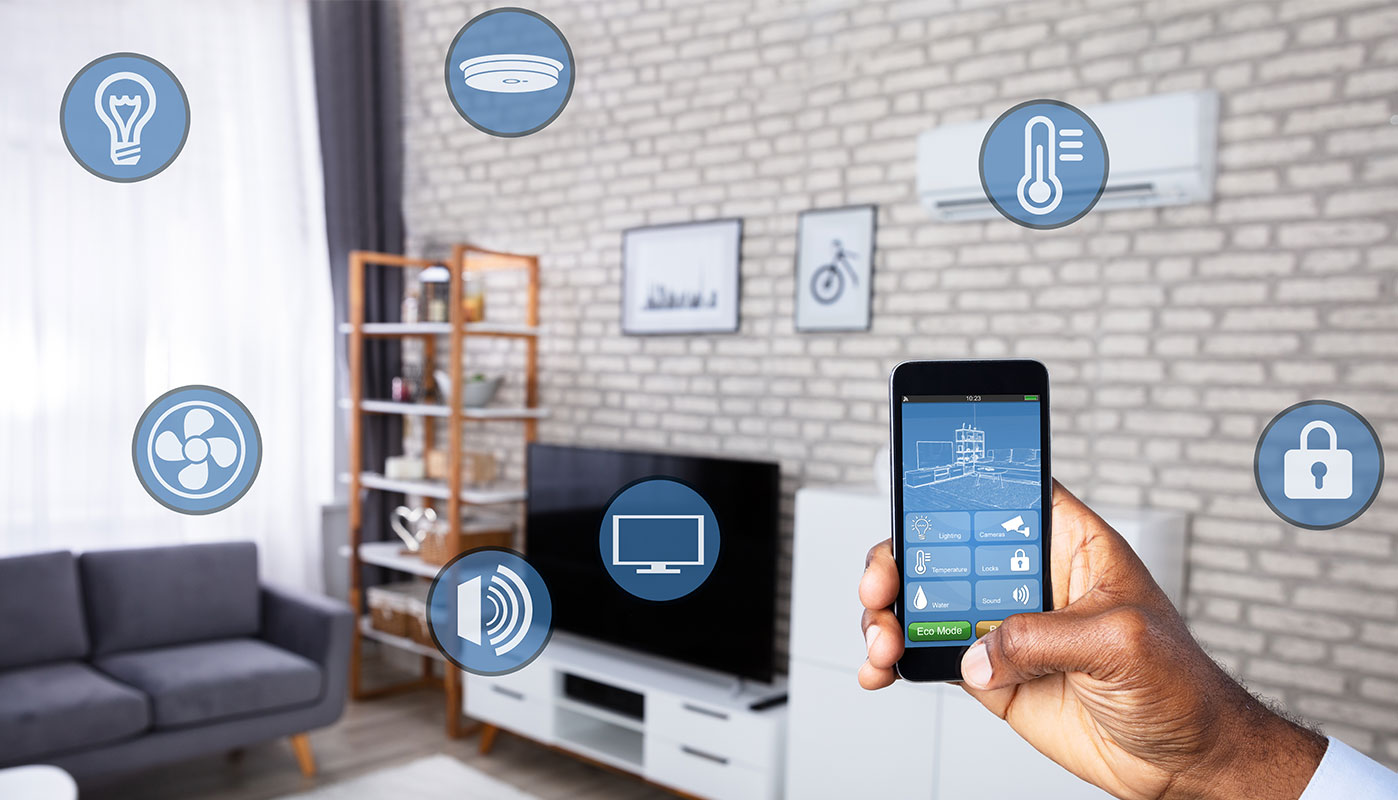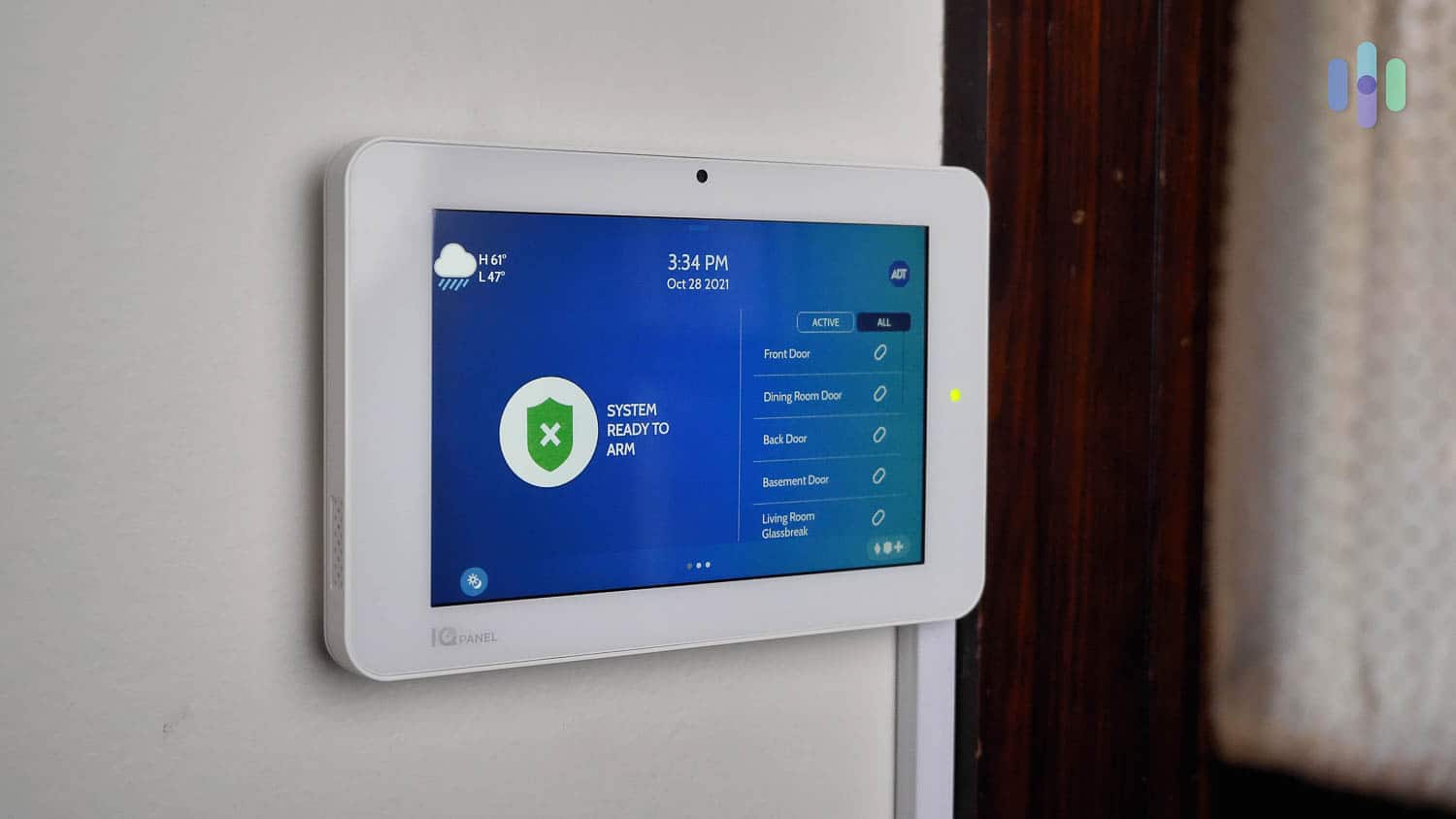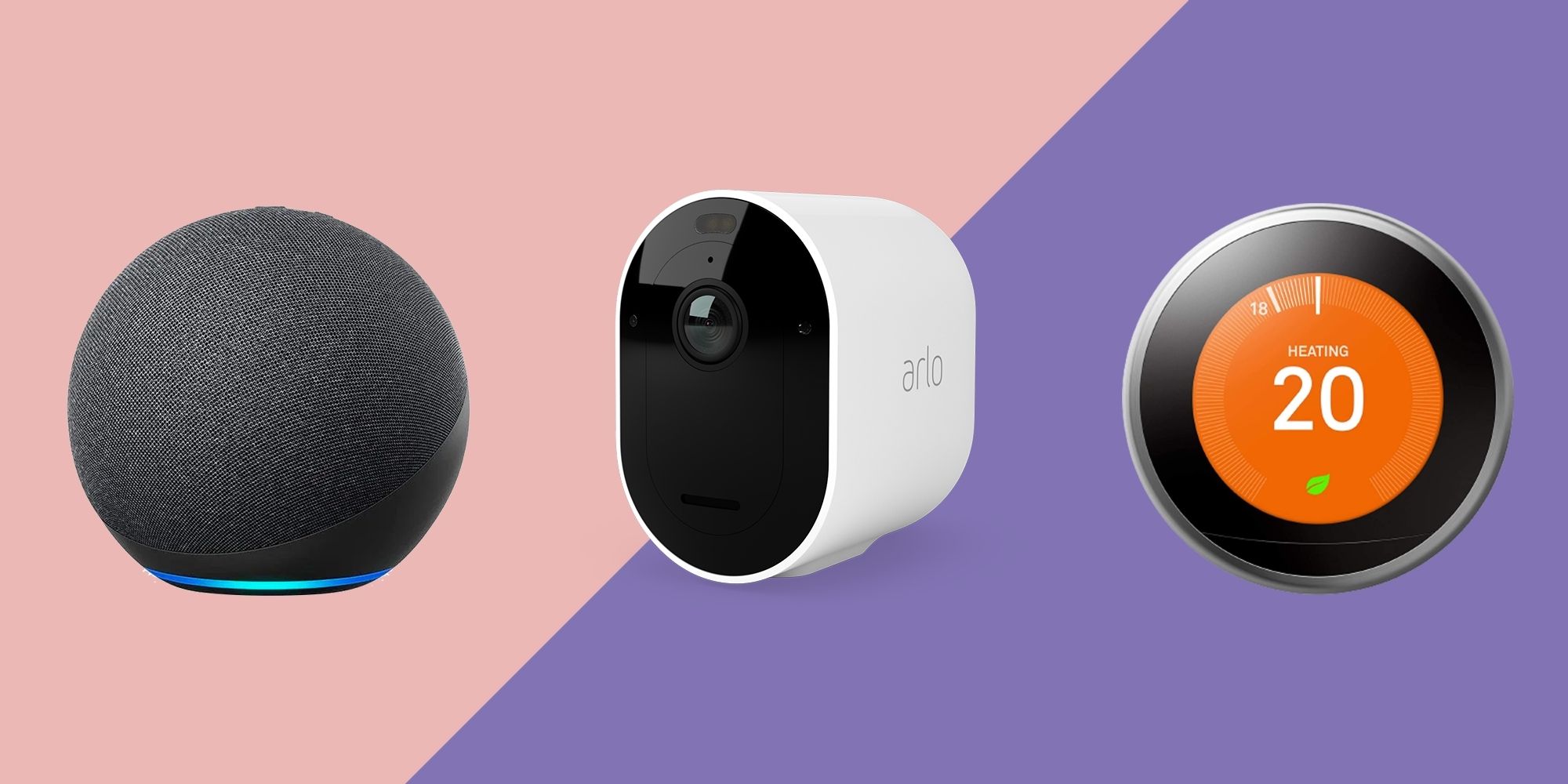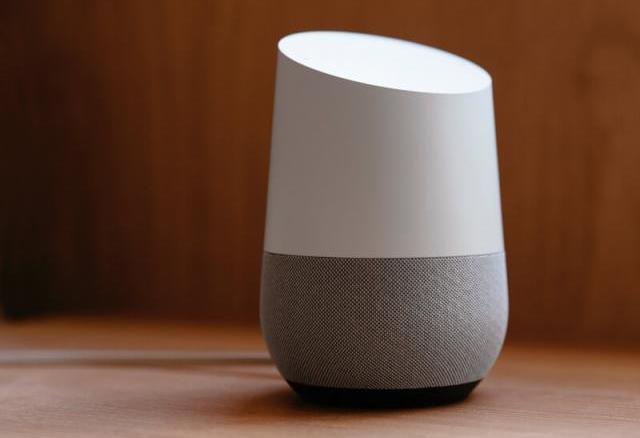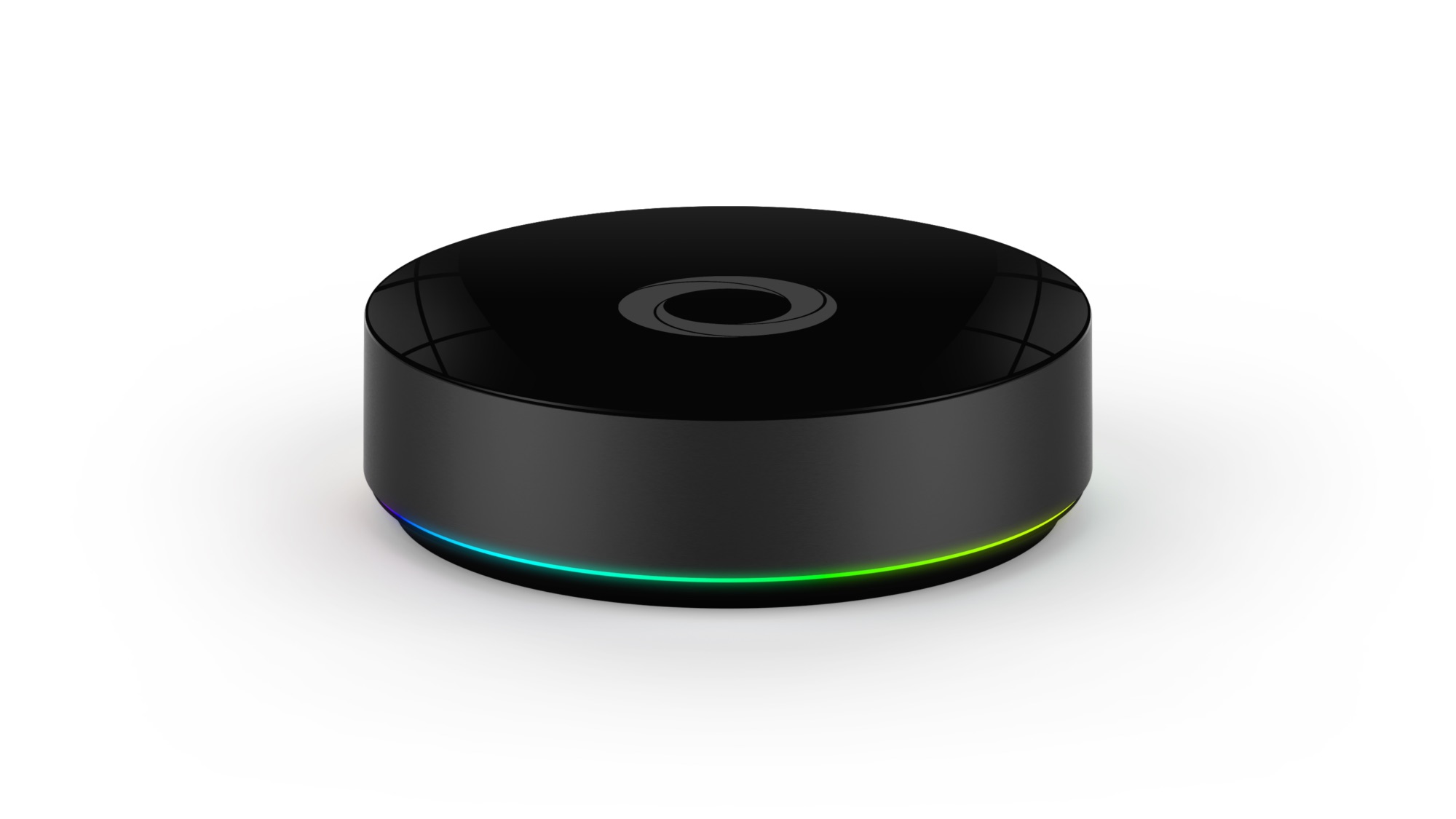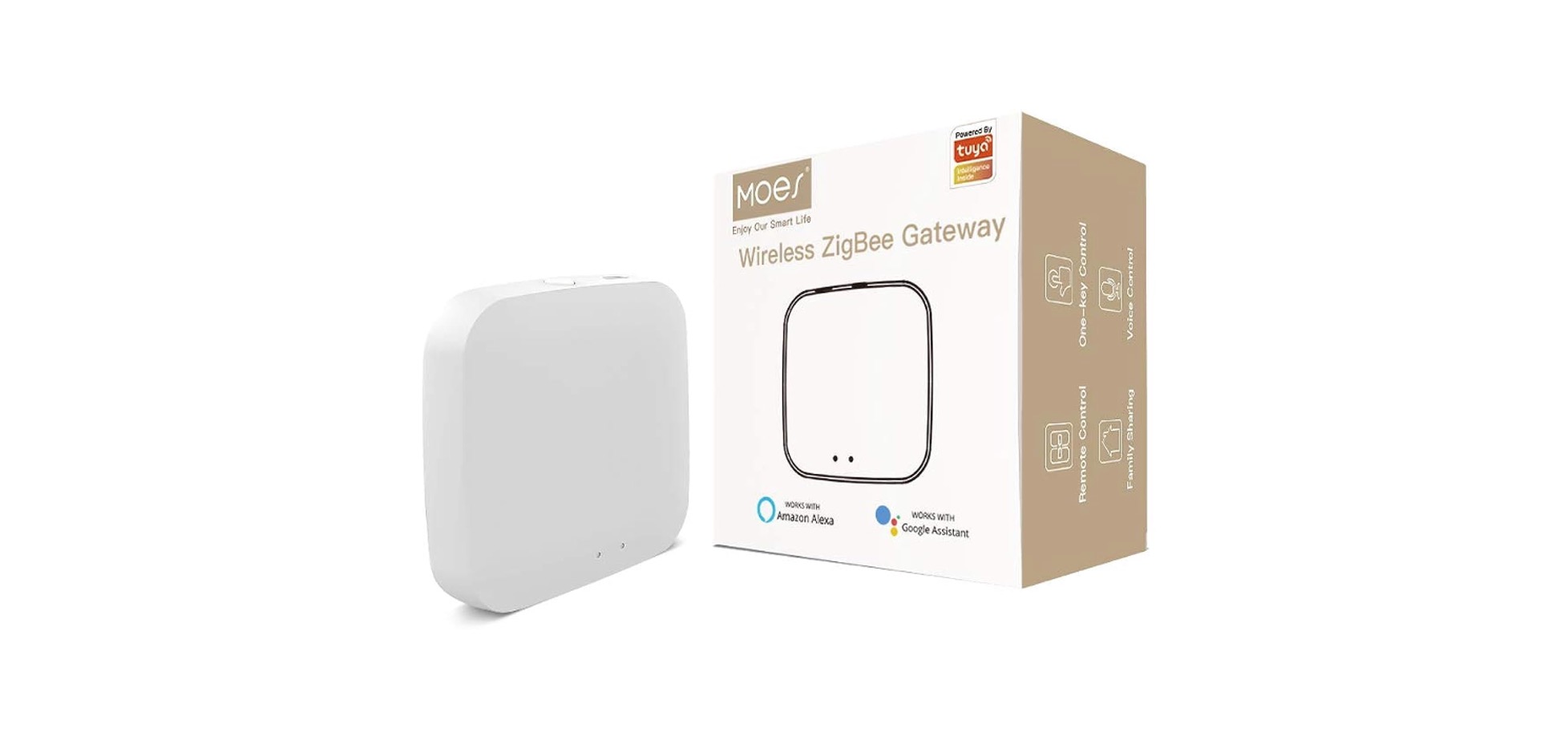Introduction
Welcome to the future of living! The concept of a smart home has revolutionized the way we interact with our living spaces, bringing convenience, comfort, and efficiency to a whole new level. With the rapid advancement of technology, we now have the ability to control various aspects of our homes with just a few taps on our smartphones or voice commands. From adjusting the temperature to turning on the lights, the possibilities are endless.
In this article, we will explore the essentials you need to transform your home into a smart haven. Whether you’re a tech enthusiast or simply seeking ways to simplify your daily routines, understanding the basics of setting up a smart home is crucial.
While the idea of a smart home may seem daunting at first, rest assured that it’s easier than you think. With the right devices and a solid internet connection, you’ll be well on your way to experiencing the wonders of home automation. So let’s dive in and discover the key components that make up a smart home.
Smart Home Basics
Before embarking on your smart home journey, it’s essential to understand the basic principles behind it. At its core, a smart home is a collection of interconnected devices and systems that allow you to automate and control various aspects of your home remotely. This automation is achieved through the use of sensors, Wi-Fi connectivity, and smart devices that communicate with each other.
One of the foundational elements of a smart home is a reliable internet connection. Without a stable and fast internet connection, the seamless communication between devices will be hindered. Make sure you have a broadband connection that can handle the data demands of your smart devices.
Another crucial aspect of a smart home is a robust Wi-Fi network. Since many smart devices rely on wireless connectivity, a strong and secure Wi-Fi network is vital for their proper functioning. Consider investing in a high-quality router and strategically place Wi-Fi extenders around your home for optimal coverage.
Once you have your internet connection and Wi-Fi network in place, you can start building your smart home ecosystem. This involves selecting and integrating various smart devices that cater to your specific needs and preferences. Common smart devices include smart hubs, smart speakers, smart lighting, smart thermostats, smart security systems, smart cameras, smart locks, and smart appliances.
A smart hub acts as the central control unit for your smart home, allowing you to manage and communicate with all your devices from a single platform. It serves as the brain of your smart home, enabling seamless integration and automation.
Smart speakers, coupled with voice assistants like Amazon Alexa or Google Assistant, provide a hands-free and convenient way to interact with your smart home. You can control devices, play music, set reminders, and even ask questions, all through voice commands.
Smart lighting allows you to remotely control and automate your lighting fixtures. From adjusting brightness levels to setting lighting schedules, you can create the perfect ambiance and save energy in the process.
Smart thermostats are designed to enhance your home’s energy efficiency by allowing you to customize temperature settings and create heating and cooling schedules. They learn your preferences over time and automatically adjust to maintain a comfortable and energy-efficient environment.
A smart security system provides peace of mind by allowing you to monitor and control your home’s security remotely. It typically includes features like motion sensors, door/window sensors, and alarm systems, all of which can be managed through a smartphone app.
Smart cameras and doorbells enable you to keep an eye on your home even when you’re away. You can view live footage, receive alerts, and communicate with visitors through your smartphone.
Smart locks and access control systems give you the ability to lock and unlock your doors remotely. You can also grant temporary access to guests or service providers, ensuring the security of your home at all times.
Smart appliances, such as refrigerators, washing machines, and ovens, offer advanced features like remote control, energy monitoring, and automated settings. These devices make household chores more convenient and efficient.
Lastly, a smart entertainment system takes your home theater experience to the next level. From smart TVs and streaming devices to sound systems and voice-controlled remotes, you can create a personalized and immersive entertainment setup.
By understanding these smart home basics, you are now equipped with the knowledge to build a connected and futuristic living space. The possibilities are endless, and as technology continues to evolve, the smart home experience will only become more seamless and integrated.
Internet Connection and Wi-Fi
An essential component of a smart home is a reliable and fast internet connection. Without a stable internet connection, your smart devices will struggle to communicate and perform their intended functions. Here, we’ll explore the importance of a robust internet connection and Wi-Fi network in creating a seamless smart home experience.
First and foremost, it’s crucial to have a broadband internet connection with sufficient bandwidth. The speed of your internet connection will determine how quickly your smart devices can send and receive data. Faster speeds ensure smoother communication between devices, reducing latency and lag. Consider upgrading to a higher-speed internet plan to accommodate the increased data demands of smart devices.
Equally important to your internet connection is a strong Wi-Fi network. Most smart devices operate wirelessly, relying on Wi-Fi connectivity to communicate with each other and with you. To ensure a reliable and robust connection, invest in a high-quality router. Look for routers that support the latest Wi-Fi standards, such as Wi-Fi 6, which offers faster speeds and improved coverage.
Proper placement of your router is also critical. Position it in a central location within your home, away from obstructions, and at a height that allows for better signal propagation. Place your router away from devices that may interfere with the Wi-Fi signal, such as microwaves or cordless phones.
In larger homes or those with thick walls, a single router may not provide adequate coverage. In such cases, consider using Wi-Fi range extenders or mesh Wi-Fi systems. Range extenders amplify the Wi-Fi signal to reach areas with weak coverage, while mesh Wi-Fi systems use multiple access points to create a seamless network throughout your entire home.
Securing your Wi-Fi network is essential to protect your smart home devices from unauthorized access. Change the default login credentials for your router and enable WPA2 or WPA3 encryption to prevent unauthorized users from connecting to your network. Additionally, create a unique and strong Wi-Fi password and consider implementing additional security measures, such as enabling a guest network for visitors.
Regularly updating your router’s firmware also helps ensure optimal performance and security. Check the manufacturer’s website for any updates and install them as recommended. Firmware updates often introduce new features, bug fixes, and security patches that can enhance the performance and security of your network.
Lastly, consider bandwidth management for your smart devices. Some smart devices, such as cameras or streaming devices, may require more bandwidth than others. Prioritize critical devices, such as security cameras, by allocating more bandwidth to them or setting up Quality of Service (QoS) rules in your router’s settings.
By paying attention to your internet connection and Wi-Fi network, you can create a solid foundation for your smart home. A reliable and fast internet connection, coupled with a strong Wi-Fi network, will ensure seamless communication between your smart devices and provide you with the ultimate smart home experience.
Smart Hubs and Controllers
In the world of smart homes, smart hubs and controllers play a crucial role in bringing all your smart devices together. They act as the central control unit, allowing you to manage and communicate with your devices from a single platform. In this section, we’ll explore the importance of smart hubs and controllers in creating an integrated and streamlined smart home experience.
A smart hub serves as the brain of your smart home system. It acts as a central hub, connecting various smart devices and allowing them to communicate with each other. With a smart hub, you can control your devices through a single app or interface, regardless of the brand or protocol they use.
One of the primary advantages of a smart hub is interoperability. It enables devices from different manufacturers to work together seamlessly, eliminating the need for multiple apps or controllers for each device. This ensures a unified and user-friendly experience, where you can control and automate all your smart devices from one place.
Smart hubs also allow for advanced automation and customization. You can create scenes or routines to trigger a series of actions with just one command. For example, you can create a “Good Morning” scene that turns on the lights, adjusts the thermostat, and plays your favorite music, all with a single tap or voice command.
When choosing a smart hub, consider compatibility with a wide range of devices and protocols. Look for hubs that support popular protocols like Zigbee, Z-Wave, or Wi-Fi. This ensures that you have flexibility in adding various devices to your smart home setup without restrictions.
Another option to consider is a smart home controller. While not as extensive as a smart hub, a smart home controller offers a simplified way to control your smart devices. They often come in the form of a smartphone app or a dedicated handheld controller.
Smart home controllers are ideal for homeowners who want a straightforward and intuitive way to manage their smart devices without the need for complex automation. They provide a user-friendly interface where you can easily navigate through different devices and control their functions.
Some smart hubs and controllers also offer voice control capabilities. By integrating with voice assistants like Amazon Alexa or Google Assistant, you can control your smart home devices through simple voice commands.
When setting up your smart hub or controller, ensure that it’s securely connected to your Wi-Fi network. Protect it with a strong password and enable two-factor authentication for an added layer of security.
Ultimately, smart hubs and controllers play a vital role in the organization and management of your smart home ecosystem. They provide a centralized platform where you can control and automate your devices, creating a truly connected and streamlined smart home experience.
Smart Speakers and Voice Assistants
In a world that values convenience and hands-free interactions, smart speakers and voice assistants have become integral components of smart homes. These devices not only provide immersive audio experiences but also serve as the gateway to controlling your smart home devices with simple voice commands. In this section, we’ll explore the role of smart speakers and voice assistants in creating a truly connected and intelligent smart home environment.
Smart speakers, such as the Amazon Echo or Google Home, are equipped with voice assistant technology that allows you to interact with them using natural language. They are designed to respond to voice commands and perform various tasks, whether it’s playing music, providing weather updates, or answering questions.
One of the key benefits of smart speakers is their integration with voice assistants like Amazon Alexa, Google Assistant, or Apple Siri. Voice assistants act as virtual companions, always ready to assist you in your daily activities. By simply speaking a command or question, you can access a wealth of information and control your smart home devices.
With voice assistants, you can control your smart home devices using nothing but your voice. Whether it’s turning on the lights, adjusting the thermostat, or locking the doors, you can manage your entire smart home ecosystem with ease. This hands-free approach to controlling your devices adds a new level of convenience and accessibility.
Additionally, smart speakers and voice assistants can be interconnected with other smart devices and services, creating a truly interconnected smart home experience. You can integrate your smart speakers with music streaming services, home automation platforms, and even other smart devices like smart TVs or smart cameras.
When choosing a smart speaker, consider factors such as sound quality, compatibility with your preferred voice assistant, and connectivity options. Some smart speakers offer additional features like built-in smart displays, which can display visual information alongside voice responses.
Integrating smart speakers into your smart home setup is relatively straightforward. Simply set up your speaker following the manufacturer’s instructions, connect it to your Wi-Fi network, and link it with your preferred voice assistant account. Then, you can start discovering the vast capabilities and convenience that voice control brings to your smart home.
Privacy and security are important considerations when using smart speakers and voice assistants. Manufacturers have implemented features to protect user privacy, such as allowing manual mute buttons or providing options to review and delete voice command history. It’s also important to be mindful of the types of information you share with your voice assistant and review the privacy settings available.
Overall, smart speakers and voice assistants are innovative additions to the smart home landscape. They provide effortless control, immersive audio experiences, and seamless integration with other smart devices, enabling you to create a connected and intelligent living space.
Smart Lighting
Smart lighting is a fundamental aspect of any smart home, offering convenience, energy efficiency, and customization to suit your lifestyle. With the ability to control your lights remotely, adjust brightness levels, and even change colors, smart lighting adds a new dimension to your living space. In this section, we’ll delve into the features and benefits of smart lighting in creating an immersive and personalized smart home experience.
One of the primary advantages of smart lighting is the ability to control your lights from anywhere. Whether you’re at home or away, you can remotely turn on or off your lights using a smartphone app or voice command. This feature provides added convenience and helps enhance security by giving the appearance that someone is home even when you’re not.
Customization is another key benefit of smart lighting. With adjustable brightness levels, you can set the perfect ambiance for any occasion—whether it’s a cozy movie night or a lively party. Some smart light bulbs also offer color-changing capabilities, allowing you to transform your living space with a spectrum of colors to suit your mood.
Energy efficiency is a significant advantage of smart lighting. Many smart light bulbs use energy-saving LED technology, consuming less power compared to traditional incandescent bulbs. Additionally, you can create lighting schedules or automation rules to ensure that lights are only on when needed, reducing energy waste and lowering your electricity bills.
Smart lighting can be integrated with other smart home devices to create a cohesive environment. For example, you can set up automation rules to have your lights turn on when you enter a room, dim automatically when you start a movie, or even sync with your music for an immersive audio-visual experience.
Controlling your smart lights can be done through various methods, including smartphone apps, smart hubs, or voice assistants. With voice control, you can simply issue a voice command to adjust your lights’ settings, providing a hands-free and effortless experience.
When choosing smart lighting solutions, consider factors such as compatibility with your existing smart home ecosystem, ease of installation, and the desired features. You can opt for smart light bulbs, which replace your traditional bulbs and can be controlled individually or as a group. Alternatively, smart light switches replace your existing switches and provide smart control to the entire circuit of lights.
It’s important to mention that a stable Wi-Fi network is essential for reliable control and responsiveness of your smart lighting system. Ensure that your smart light bulbs or switches are within the range of your Wi-Fi signal to avoid connectivity issues.
Smart lighting also opens up possibilities for advanced features, such as motion sensing, geofencing, and integration with other smart devices like security systems or cameras. These features enhance convenience, energy savings, and security within your smart home.
Overall, smart lighting brings a new level of convenience, energy efficiency, and personalization to your smart home. With the ability to control your lights remotely and customize their settings, you can transform your living space into a truly immersive and dynamic environment.
Smart Thermostats
Smart thermostats bring comfort, energy efficiency, and control to your smart home by intelligently managing your home’s heating and cooling systems. With the ability to monitor and adjust your home’s temperature settings remotely, smart thermostats offer convenience, energy savings, and customization to fit your lifestyle. In this section, we’ll explore the features and benefits of smart thermostats in creating a comfortable and efficient living environment.
One of the key advantages of smart thermostats is their ability to learn and adapt to your preferences. These devices employ advanced algorithms to analyze your temperature patterns and make adjustments accordingly. Over time, they learn your schedule and automatically adjust the temperature to ensure comfort while optimizing energy consumption.
Remote control is another significant benefit of smart thermostats. Whether you’re at work, on vacation, or simply lounging on the couch, you can adjust the temperature settings through a smartphone app or voice command. This feature allows you to ensure a comfortable environment upon your arrival or save energy when no one is home.
Energy efficiency is a central aspect of smart thermostats. By providing real-time energy usage data and offering energy-saving features, they help you reduce your carbon footprint and lower your utility bills. For example, some smart thermostats can automatically adjust the temperature based on occupancy, weather conditions, or time of day to optimize comfort and energy efficiency.
Smart thermostats can be integrated with other smart devices to create a cohesive and efficient home automation system. They can communicate with your smart lighting, motion sensors, or door/window sensors to adjust the temperature based on occupancy or natural lighting conditions. This integration further enhances energy savings and overall convenience.
Many smart thermostats come with mobile apps that provide comprehensive insights into your energy usage and allow for detailed scheduling and customization. You can create heating and cooling schedules that align with your daily routines and preferences, ensuring that you come home to a comfortable environment.
A key feature of smart thermostats is their compatibility with voice assistants. By integrating with voice assistants like Amazon Alexa or Google Assistant, you can adjust your thermostat settings using simple voice commands, making it even more convenient to control your home’s temperature.
Installation of a smart thermostat typically requires basic wiring knowledge, but many manufacturers provide clear instructions and guidance. It’s important to note that compatibility with your existing heating and cooling systems should be checked before purchasing a smart thermostat.
When selecting a smart thermostat, consider factors such as compatibility with your HVAC system, ease of use, mobile app features, and the desired level of automation. Some models offer additional features like occupancy sensors, humidity control, or geofencing, allowing for even greater customization and efficiency.
By upgrading to a smart thermostat, you gain control over your home’s climate and benefit from increased comfort, energy efficiency, and savings. With their learning capabilities, remote control features, and integration with other smart devices, smart thermostats are an essential component of a modern and efficient smart home.
Smart Security System
A smart security system is a key component for creating a safe and secure smart home environment. With advancements in technology, these systems offer a range of features that go beyond traditional home security measures. In this section, we’ll explore the benefits and functionality of a smart security system in protecting your home and providing peace of mind.
One of the primary advantages of a smart security system is the ability to monitor and control your home’s security remotely. From anywhere in the world, you can access live video feeds, receive alerts, and manage your security devices through a smartphone app or web portal.
Smart security cameras play a crucial role in a smart security system. They provide real-time video surveillance, allowing you to keep an eye on your home and property at all times. Many modern cameras offer high-definition video quality, night vision, and wide-angle views for comprehensive coverage.
Combined with motion detection technology, smart security cameras can send instant alerts when any suspicious activity is detected. These alerts can be delivered to your smartphone, allowing you to take immediate action or notify the authorities if necessary.
Smart security systems also offer features like facial recognition, which can automatically identify known individuals and alert you of any unrecognized individuals who may be on your property. This enhances the overall security of your home and offers peace of mind.
In addition to cameras, smart security systems often incorporate door/window sensors, motion sensors, and alarm systems. These devices can be connected to a central control panel or hub, providing comprehensive monitoring and protection against potential intruders.
Integration with other smart home devices is a significant benefit of a smart security system. For instance, when connected with smart lighting, your lights can be programmed to automatically turn on when you’re away, giving the impression that someone is home. This helps deter potential burglars.
Smart security systems can also be connected to smart locks, allowing you to remotely lock or unlock your doors. You can provide temporary access codes to guests or service providers and receive notifications when someone enters or exits your home.
One of the advantages of smart security systems is the potential for professional monitoring services. These services provide an added layer of security by monitoring your home 24/7 and contacting the authorities in case of an emergency.
When selecting a smart security system, consider factors such as the quality and reliability of the cameras, the range and sensitivity of the sensors, the ease of use of the control panel or app, and the availability of professional monitoring services.
Overall, a smart security system offers advanced protection and peace of mind for your smart home. With remote monitoring, instant alerts, integration with other smart devices, and options for professional monitoring, you can ensure that your home is secure and protected at all times.
Smart Cameras and Doorbells
Smart cameras and doorbells are integral components of a modern smart home security system. These devices provide enhanced surveillance, convenience, and peace of mind by allowing you to monitor and protect your home from anywhere. In this section, we’ll explore the features and benefits of smart cameras and doorbells in creating a secure and connected smart home environment.
Smart cameras play a crucial role in home security by providing real-time video surveillance of your property. With high-definition video quality, wide-angle views, and night vision capabilities, smart cameras offer comprehensive coverage both indoors and outdoors.
The ability to access live video feeds and recordings remotely is one of the primary advantages of smart cameras. You can monitor your home in real-time through a smartphone app or web portal, ensuring that you’re always aware of what’s happening.
Smart cameras often come equipped with motion detection technology, which triggers recording or alerts when any movement is detected within the camera’s field of view. This feature helps you keep an eye on specific areas of concern and receive instant notifications when there’s activity on your property.
In addition to live monitoring, smart cameras can store video recordings locally or in the cloud, allowing you to review footage and provide evidence in case of any incidents or security breaches. Cloud storage offers the benefit of accessing recordings from anywhere, even if the camera is stolen or damaged.
Integration with other smart devices enhances the functionality of smart cameras. For example, when connected with smart lighting, you can set up rules for the lights to turn on automatically when motion is detected. This can serve as a deterrent to potential intruders.
Smart doorbell cameras, also known as video doorbells, add an extra layer of security and convenience. These devices allow you to see and communicate with visitors at your door, whether you’re at home or away.
When someone rings the doorbell, smart doorbell cameras send instant alerts to your smartphone, enabling you to see who is at the door. You can then have a two-way conversation with the visitor through the built-in microphone and speaker, providing a convenient way to interact with delivery personnel, guests, or even potential intruders.
Smart doorbell cameras often offer additional features such as motion detection, video recording, and cloud storage. This allows you to monitor any activity around your doorstep and review footage if needed.
Installation of smart cameras and doorbells is typically straightforward, with options for wired or wireless configurations. Some devices can be easily mounted or installed in existing doorbell locations, while others may require professional installation.
When selecting smart cameras and doorbells, consider factors such as video quality, field of view, storage options, compatibility with your smart home ecosystem, and the availability of advanced features.
Ultimately, smart cameras and doorbells offer a layer of security, convenience, and peace of mind for your smart home. With their remote monitoring capabilities and integration with other smart devices, you can create a connected and secure environment to protect your home and loved ones.
Smart Locks and Access Control
Smart locks and access control systems are essential components of a modern smart home, providing convenience, security, and peace of mind. With the ability to remotely control and monitor access to your home, these devices offer enhanced protection and flexibility. In this section, we’ll explore the features and benefits of smart locks and access control systems in creating a secure and connected smart home environment.
One of the primary advantages of smart locks is the convenience they offer. With a smart lock, you can lock or unlock your doors remotely using a smartphone app or voice command. This feature eliminates the need for physical keys and allows you to provide access to guests or service providers when you’re not at home.
Integration with other smart devices, such as smart cameras or doorbells, enhances the functionality of smart locks. You can receive real-time notifications when the door is locked or unlocked, allowing you to monitor access and be alerted to any unauthorized activity.
Smart locks often have features like keyless entry, allowing you to unlock your door using a personalized code or even your fingerprint. This eliminates the need to carry keys and provides added convenience and flexibility for household members or trusted individuals.
Access control systems go beyond individual locks and offer centralized management of multiple entry points throughout your property. These systems are commonly used in commercial buildings or multi-unit residences, but they can also be beneficial for homeowners who want to have control over various access points.
With access control systems, you can create customized access levels and schedules for different individuals or groups of people. This feature ensures that only authorized individuals can enter specific areas at designated times, enhancing security and privacy.
When selecting a smart lock or access control system, consider factors such as compatibility with your doors, ease of installation, integration capabilities with your smart home ecosystem, and the level of security features provided.
It’s important to note that while smart locks offer convenience and flexibility, security should remain a top priority. Ensuring that your smart lock has strong encryption protocols and being vigilant about regularly updating firmware or software will help maintain the integrity of your smart home’s access control system.
In terms of installation, most smart locks can be easily retrofitted onto existing doors without the need for significant modifications. However, some smart locks may require professional installation or may be more suitable for new door installations.
Overall, smart locks and access control systems offer convenience, security, and control over the entry points of your smart home. With their remote access capabilities, customizable access levels, and integration with other smart devices, you can create a secure and connected environment while enjoying the flexibility of keyless entry.
Smart Appliances
Smart appliances are revolutionizing the way we interact with everyday household tasks, offering convenience, energy efficiency, and enhanced functionality. From refrigerators to washing machines and ovens, these appliances utilize advanced technology to simplify our lives and create a more connected and efficient home. In this section, we’ll explore the features and benefits of smart appliances in transforming your smart home setup.
One of the primary advantages of smart appliances is the ability to control and monitor them remotely. With a smartphone app or voice commands, you can easily access and adjust settings, check statuses, and receive alerts from anywhere. This convenience allows you to manage your appliances even when you’re not at home.
Energy efficiency is a key aspect of smart appliances. Many smart appliances are designed with energy-saving features, such as programmable settings, adaptive technology, and real-time energy monitoring. These features help optimize energy usage, reducing both utility bills and environmental impact.
Smart refrigerators offer features like temperature control, humidity control, and inventory management. With food recognition technology, you can keep track of your groceries, receive expiration date alerts, and even order replacements directly from the fridge’s interface.
Smart washing machines provide enhanced functionality and automation. You can remotely start or pause your laundry cycles and receive notifications when your laundry is done or if any issues occur. Some models even have the ability to automatically dispense detergent based on load size and soil level.
Smart ovens allow you to control cooking settings and monitor progress through smartphone apps or voice commands. You can preheat the oven, adjust cooking temperatures and times, and receive notifications when your meal is ready. Some models even offer recipe recommendations and guided cooking features.
Another advantage of smart appliances is their integration with other smart devices and services. For example, you can connect your smart appliances with voice assistants, allowing you to control them using simple voice commands. Integration with home automation systems also enables scenarios like automatically starting the dishwasher after dinner or adjusting the oven temperature based on the recipe you choose.
Installation and setup of smart appliances are often similar to their traditional counterparts. However, some models may require additional steps, such as connecting to your Wi-Fi network or setting up accounts within the manufacturer’s ecosystem. It’s important to follow the manufacturer’s instructions to ensure proper installation and integration.
When choosing smart appliances, consider factors such as compatibility with your existing smart home system, energy efficiency ratings, functionality and features, and the manufacturer’s track record in terms of reliability and customer support.
Overall, smart appliances offer a new level of convenience, energy efficiency, and control in your smart home. With their remote accessibility and integration capabilities, you can streamline household tasks, save energy and time, and enjoy a more connected and efficient living environment.
Smart Entertainment Systems
Smart entertainment systems bring an immersive and personalized entertainment experience to your smart home. From smart TVs to streaming devices and voice-controlled remotes, these systems offer convenience, seamless integration, and a plethora of content options. In this section, we’ll explore the features and benefits of smart entertainment systems in enhancing your home entertainment setup.
One of the primary advantages of smart entertainment systems is the vast array of content options at your fingertips. With smart TVs or streaming devices, you can access popular streaming platforms like Netflix, Hulu, or Amazon Prime Video, as well as music streaming services like Spotify and Pandora. This allows you to enjoy a wide variety of movies, shows, music, and other multimedia content straight from your living room.
Smart TVs are equipped with built-in Wi-Fi and smart features, eliminating the need for additional devices. You can connect to the internet, browse the web, use social media apps, and access a range of online content directly from your TV. Some smart TVs even offer voice control capabilities, allowing you to operate your TV with simple voice commands.
Streaming devices, such as Roku, Apple TV, or Amazon Fire TV, are another option for transforming your TV into a smart entertainment system. These devices connect to your TV’s HDMI port and offer access to numerous streaming apps and services. They provide a user-friendly interface, giving you easy access to your favorite content with just a few clicks or voice commands.
Alongside smart TVs and streaming devices, smart sound systems enhance the audio experience of your entertainment setup. With wireless speakers and soundbars, you can create a surround sound environment to immerse yourself in movies, music, or games. Many smart sound systems offer integration with voice assistants, allowing you to control the volume or playback using voice commands.
Integration with voice assistants, such as Amazon Alexa or Google Assistant, is a common feature of smart entertainment systems. With voice control, you can effortlessly search for content, change channels, adjust volume, or even control other smart devices in your home theater setup. This hands-free approach adds convenience and simplicity to your entertainment experience.
Smart remotes or smartphone apps provide centralized control for your smart entertainment system. Instead of juggling multiple remotes, you can use a single remote or your smartphone to navigate through different devices and apps. Some remotes even offer voice control capabilities, allowing for seamless and intuitive control of your entertainment experience.
Setup of smart entertainment systems is generally straightforward. Smart TVs or streaming devices can be easily connected to your existing TV and Wi-Fi network. Most manufacturers provide user-friendly interfaces and instructions to guide you through the initial setup process.
When selecting a smart entertainment system, consider factors such as the display quality for TVs, compatibility with streaming services and voice assistants, connectivity options, and the overall user experience. Reading reviews and comparing specifications can help you make an informed decision that matches your preferences and needs.
Overall, smart entertainment systems bring convenience, integration, and a wealth of content to your smart home. With the ability to access a wide range of multimedia options, control your entertainment devices with voice commands, and streamline the user experience, these systems elevate your home entertainment setup to new heights.
Smart Home Networking
A robust and reliable network is the backbone of a smart home. Smart home devices rely on a stable internet connection and seamless communication to function properly. In this section, we’ll explore the importance of smart home networking and how to optimize your home network for a smooth and efficient smart home experience.
First and foremost, a fast and stable internet connection is essential for a responsive and connected smart home. Consider upgrading to a high-speed broadband connection that can handle the bandwidth requirements of multiple smart devices simultaneously. This will ensure smooth communication between devices and smooth access to online services and content.
A strong Wi-Fi network is crucial for wireless communication between smart devices. Place your Wi-Fi router in a central location within your home to maximize coverage. Keep the router away from obstructions and interference sources, such as walls, large appliances, or other electronic devices.
If your home is large or has multiple floors, you may need additional access points or Wi-Fi range extenders to ensure comprehensive and reliable coverage. These devices can extend the range of your Wi-Fi network and provide a seamless connection throughout your entire home.
Make sure to secure your Wi-Fi network to protect it from unauthorized access. Set a strong password and enable WPA2 or WPA3 encryption. Regularly update your router’s firmware to ensure it has the latest security patches and features.
Bandwidth management is another important aspect of smart home networking. Some smart devices, such as cameras or streaming devices, may require more bandwidth than others. Prioritize critical devices, such as security cameras or gaming consoles, by allocating more bandwidth to them or using Quality of Service (QoS) settings in your router to manage traffic effectively.
Separating your smart home devices onto a dedicated network can also help optimize your network performance. This is especially useful if you have many devices or if some devices have outdated firmware that may impact the overall network stability. Consider creating a separate guest network for devices that are not critical to your smart home ecosystem.
When setting up new smart devices, follow the manufacturer’s instructions and guidelines. Some devices may require specific network configurations or compatibility with specific Wi-Fi standards. Make sure to read the device’s documentation and check for any firmware updates to ensure compatibility and optimal performance.
In some cases, a wired connection may be more reliable than a wireless connection. If possible, connect critical smart home devices, such as gaming consoles or smart TVs, to your router using Ethernet cables. This will provide a more stable and faster connection, reducing the risk of interruptions or latency issues.
Regularly monitoring and troubleshooting your network can help identify and resolve any issues that may be affecting your smart home experience. Utilize network monitoring tools or apps to check the signal strength, bandwidth usage, and connectivity status of your devices. If you encounter any issues, try power cycling your network devices or resetting them to factory settings.
In summary, a strong and optimized network is vital for a seamless and efficient smart home experience. By ensuring a fast and stable internet connection, securing your Wi-Fi network, managing bandwidth effectively, and troubleshooting any issues, you can create a reliable and connected network infrastructure that supports your smart home devices and enhances your overall smart home experience.
Conclusion
Transforming your home into a smart home is an exciting journey that brings convenience, comfort, and efficiency to your everyday life. By understanding the basics of smart home technology and investing in the right devices, you can create a connected and advanced living space. From internet connectivity and Wi-Fi networks to smart hubs, speakers, lighting, security systems, appliances, entertainment systems, and networking, each component plays a crucial role in building a comprehensive smart home ecosystem.
With a stable internet connection and a strong Wi-Fi network, you can ensure seamless communication and control between your smart devices. Smart hubs and controllers act as the central command centers, allowing you to manage and automate various devices from a single platform. Smart speakers and voice assistants provide hands-free control and add convenience to your daily routine.
Smart lighting, thermostats, security systems, cameras, doorbells, locks, and access control systems enhance the safety, energy efficiency, and security of your home. Smart appliances introduce convenience and energy savings to household tasks. Smart entertainment systems offer a wide range of content options and immersive experiences.
Optimizing your smart home networking ensures a strong and reliable connection for all your devices. From fast internet speeds to secure Wi-Fi networks, proper placement of routers and access points, and effective bandwidth management, a well-optimized network is vital for a smooth and seamless smart home experience.
As technology continues to evolve, the possibilities for smart home advancements are endless. New devices and features are constantly being developed to make our homes more intelligent and efficient. As you embark on your smart home journey, regularly research and stay updated on the latest innovations to continue enhancing your smart home ecosystem.
Remember to prioritize privacy and security when setting up your smart home. Configure and update passwords, enable encryption, review privacy settings, and be cautious when sharing personal information.
In conclusion, building a smart home requires a thoughtful selection of devices, a well-optimized network, and a balance between convenience, energy efficiency, and security. By embracing the power of smart home technology, you can create a connected living space that not only enriches your daily life but also offers a glimpse into the future of home automation and efficiency.










